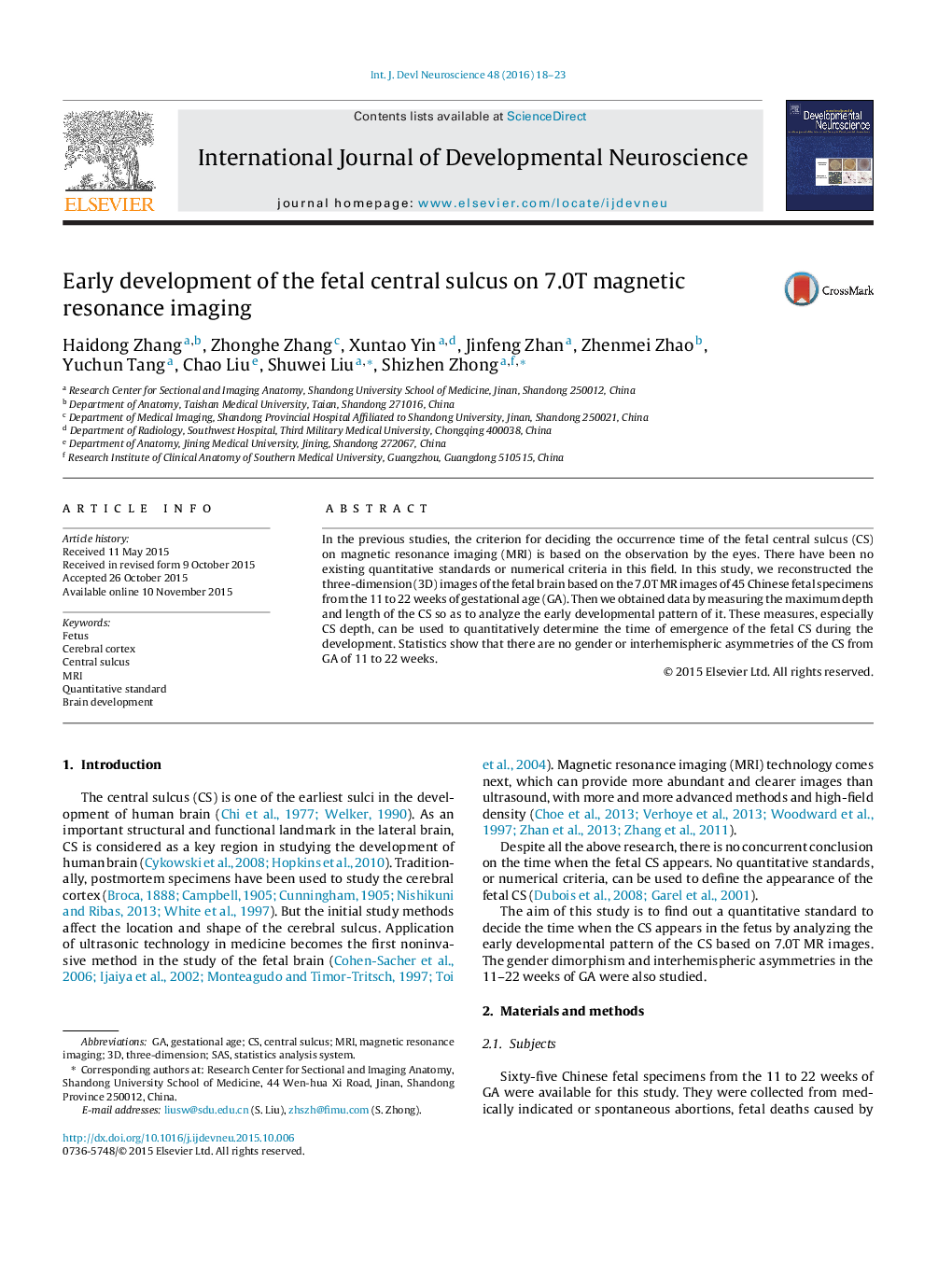| Article ID | Journal | Published Year | Pages | File Type |
|---|---|---|---|---|
| 2785628 | International Journal of Developmental Neuroscience | 2016 | 6 Pages |
•In this study, we did the systemic research on the early development of the central sulcus (CS) of the fetus for the first time. 7T MRI is performed on 45 fetuses ranging from the 11 to 22 weeks of gestational age. We measured the maximum length and the maximum depth of central sulcus, and tried to find out the quantitative standard to decide the time when the CS appears in fetus. Based on statistical analysis of the data.•The CS data of depth and length of 15 weeks of GA can be used as a quantitative standard to determine the emergence of it.•There is no gender dimorphisms and interhemispheric asymmetries of CS from 11 to 22 weeks of GA.•This study enriches the anatomical knowledge of fetal brain development, which is important for the clinical diagnosis and treatment for the fetal brain diseases.
In the previous studies, the criterion for deciding the occurrence time of the fetal central sulcus (CS) on magnetic resonance imaging (MRI) is based on the observation by the eyes. There have been no existing quantitative standards or numerical criteria in this field. In this study, we reconstructed the three-dimension (3D) images of the fetal brain based on the 7.0T MR images of 45 Chinese fetal specimens from the 11 to 22 weeks of gestational age (GA). Then we obtained data by measuring the maximum depth and length of the CS so as to analyze the early developmental pattern of it. These measures, especially CS depth, can be used to quantitatively determine the time of emergence of the fetal CS during the development. Statistics show that there are no gender or interhemispheric asymmetries of the CS from GA of 11 to 22 weeks.
